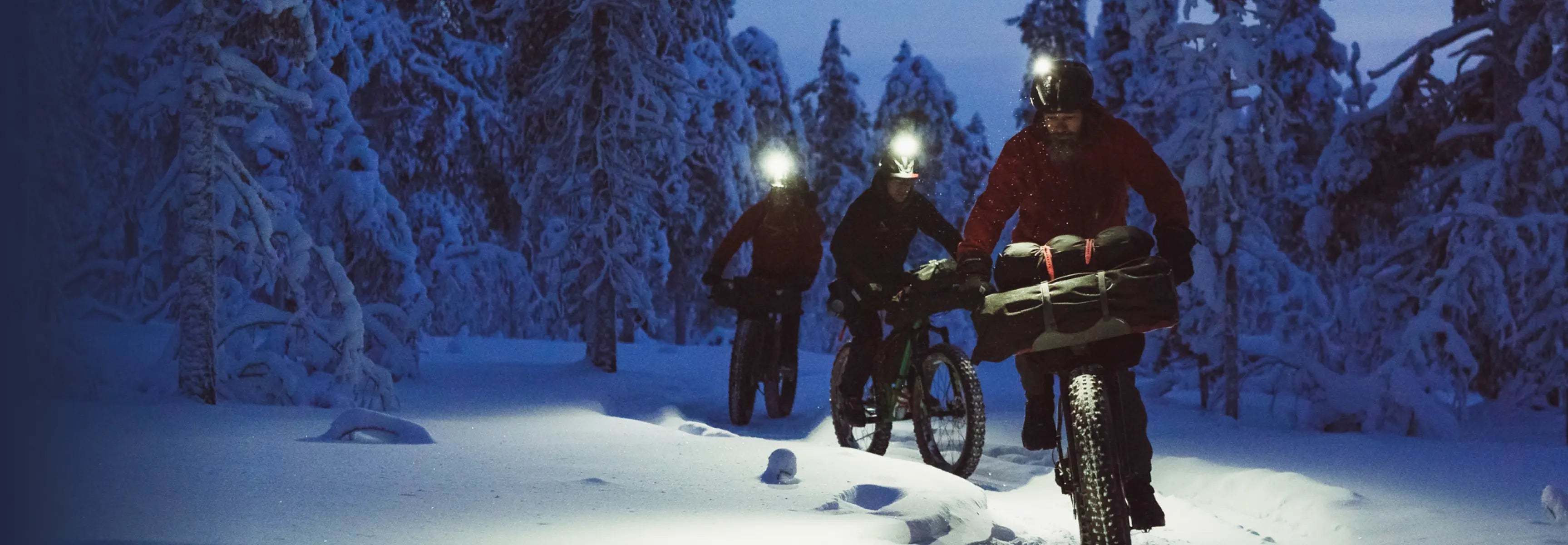
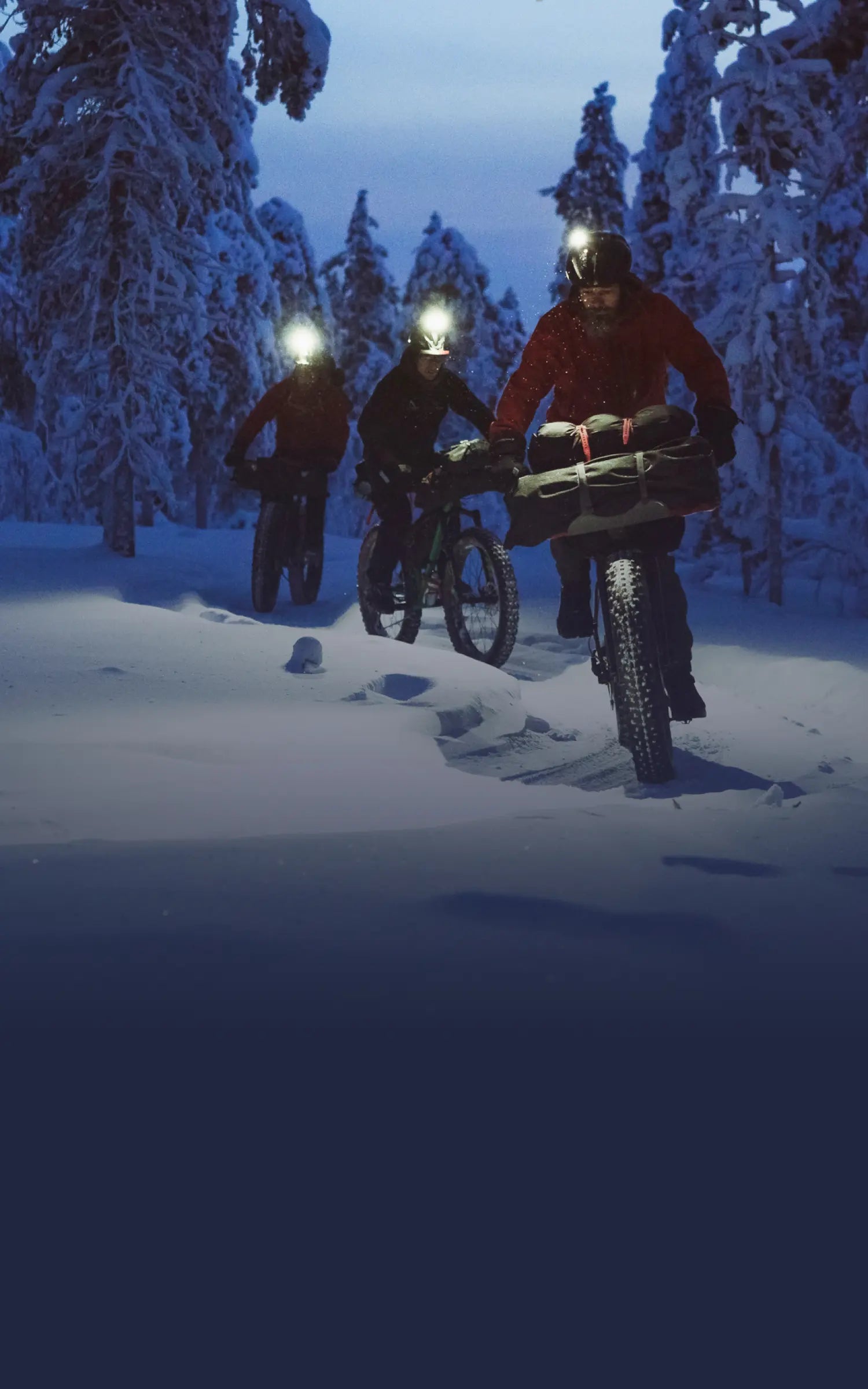
Suunto Blog
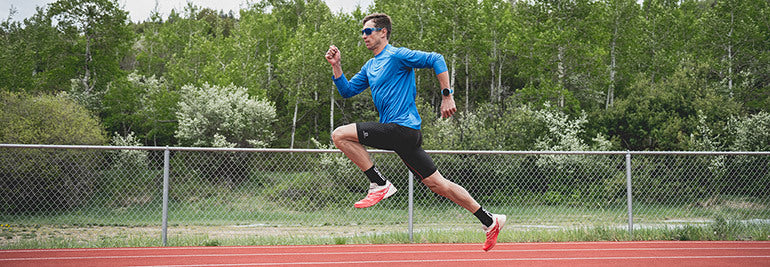
#howdoirun makes runners stronger
“I was surprised by how well people ran in general, I expected much worse,” says running coach Adam St. Pierre from CTS. Adam and Jason Koop, another CTS coach, have been commenting the running videos.
What were the most common issues you saw in the videos?
“I think the most common issues I saw related to posture. A few people leaned too far forward, bending at the waist, a few people were too straight up (or even leaning back). Proper running mechanics starts with posture. Without good posture it is very difficult to have an effective arm carriage or sufficient hip flexion and extension. If hip flexion is limited, it is very difficult for a runner not to overstride. If hip extension is limited, it puts strain on the lower back and limits the ability of the gluts to produce power,” Adam St. Pierre explains.
Any tips on how to move forward?
“Stand tall and run happy, that fixes most issues,” concludes coach Jason Koop.
LEARN 8 ESSENTIAL RUNNING FORM DRILLS
And the winners are…
Three of the most inspiring #howdoirun videos won Suunto Spartan Sport Wrist HR watches. Here are the winners.
Tim Larsson from Åre, Sweden
One last run before China. So, @suunto, how is my form? #suuntorun #howdoirun #xtrailadventurerace #xtrail #älskaåre
A post shared by Tim Larsson (@tmlarsson) on May 30, 2017 at 2:22am PDT
Tim Larsson comes from Åre, the mountain capital of Sweden. Coach Adam gave Tim mostly positive feedback, but pointed out an issue Tim was already aware of. “Due to weak hips I have a slight inward rotation on my left foot. This is something I have been working on and it feels good to get a confirmation,” says Tim.
“I have a small dream of running the entire Kungsleden (“The King’s Trail”), a 450-kilometer multiday trail run, here in Sweden in the end of the summer. So my focus now is simply on injury prevention so that I can go on for long periods. I am also trying to become a better, more efficient climber for the skimo season next winter.”
Aaron Harwood from Sydney, Australia
Filmed for the Suunto "How do I run" Contest on Sunday 11 June 2017. This was filmed by my awesome eight year old son. The time at the end is my finish time from the Sydney Morning Herald Half Marathon last month. I need some tips to run faster 😃. What a great morning. Thanks Suunto. #howdoirun #suunto #running #triathlon
A post shared by Aaron Harwood 🏊🏻🚴🏻🏃🏻 (@aaronbharwood) on Jun 10, 2017 at 10:04pm PDT
“Adam’s feedback has been really helpful. I was aware that I heel strike causing a deceleration at each stride. I was unaware of my posture and how that was making me overstride,” says Aaron Harwood from Sydney, Australia.
“As I run now I’m constantly thinking about maintaining an upright posture. I’ve noticed in the last few days that I’m now working other muscles as I can feel a difference during recovery. By reducing the tendency to overstride, I’m also able to maintain a quicker cadence. I will be adding high knee drills into my routine and I’m sure I’ll be able to start seeing my speed increase.”
To keep his motivation high, Aaron already has a goal in his mind “I’d like to run the New York marathon next year.”
Sarah Brough from Seattle, WA, USA
Posting this for the @suunto #howdoirun event ... I never really was an avid runner. Up until a year and a half ago, I couldn't even make it 1.5 miles. But, after having my second kid, I felt like I needed to improve my personal health and so, I started to run. Now, running has become an outlet for me, a way to challenge myself and see what my body can accomplish. There have been a lot of ups & downs, but through a lot of training, I've been able to accomplish goals that I never imagined I could, like running a full marathon & 2 half marathons. I've come to love the mental game, the runner's high and the sense of accomplishment I feel once I've beaten a PR. I want to keep improving which is why @suunto I'd love to know #howdoirun 🏃🏼 #suuntorun #suunto
A post shared by Sarah Brough (@sarbrough) on Jun 8, 2017 at 9:48pm PDT
“I've been able to work on coach Adam St. Pierre’s suggestions on a few runs already and honestly, it's been tough to change my stride. But, it feels a lot better when I do it. Also, I was able to go faster when I really focused on it, which is great because that's what I am most focused on right now in my training,” says Sarah Brough from Seattle, WA, USA
Sarah has set herself a goal to run two half marathons, with one of them being under two hours. “I just finished my first half in May & got a time of 2:05. My second one is in the end of August & I'm hoping to shave off those last 5 minutes, so I can reach my goal.”
Congratulations, Sarah, Tim and Aaron. And thank you everyone for submitting your videos Happy running!
Main image by Matt Trappe
READ AN INTRO TO DISTANCE RUNNING TECHNIQUE
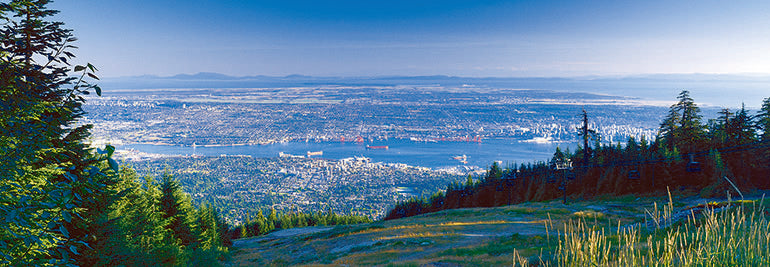
Simon Donato takes on The Grouse Grind
The Grouse Grind is an iconic trail up the face of Grouse Mountain, overlooking Vancouver, British Columbia, Canada. The trail is 2.9 kilometers long, with an elevation gain of 853 meters. Locals often refer to the trail as “Mother Nature’s Stairmaster.”
On Tuesday, June 20th Suunto Canada will be sponsoring the Suunto Multi-Grind Challenge. From dawn till dusk, racers will challenge each other to achieve the most Grouse Grind ascents in a one-day period. The current Multi-Grind Challenge record is 16 ascents! Or, over 13,500 meters of climbing!
What appealed to you about this race?
I’m attracted to this race because it’s got all the elements that I enjoy: Long day, vertical terrain, legendary route, and I know that I’ll get to face some mental battles along the way. The Grouse Grind is such an iconic route that one lap just doesn’t do it justice.
Any tips for tackling the Grouse Grind? There’s a lot of steps…
haha - Indeed. As with most really huge endurance challenges, this race will be won in the mind - not the legs. My goal is to keep the steps smooth and natural, not to push the pace too hard in the early stages, and try to keep it comfortable for as long as possible.
Have you ever done anything like this before?
I’ve never done a “stair climb” or “vertical” challenge per se, but I’ve put in many long days in the Canadian Rocky Mountains, both hiking and running for fun or chasing FKTs.
Any special strategies for tackling this much ascent in such a short time frame?
This race is unique because you get to rest on the descent by taking the Grouse Mountain Skyride, so trying to time things in such a way that you are not waiting for a tram car is critical. Eating, gear changes, etc., will all have to be done on the tram ride between ascents. One of the main goals is to climb at a very steady tempo - so that my splits are extremely similar lap - lap and avoid wasted time.
What will be your nutritional plan for the race?
My plan will be to take in as many calories as my body can handle - especially late in the race as that’s when I typically fade due to fatigue and a reduced desire to eat. Fatigue makes eating harder, and not eating enhances fatigue -it’s something I’ve struggled with in the past. In terms of calories - I’m going for as much real food as possible - and of course lots of Stoked Oats.
What performance metrics will you be focusing on during the race?
My biggest goal will be to maintain even splits…even if it feels painfully slow in the early stages. There is no benefit to reaching the summit after a hard push only to wait for the tram to arrive and take you back down.
Most importantly, the current record is 16 Grinds, how many do you think you can do?
Ha ha, the million dollar question. I would be happy with 14, and thrilled with 15.
What keeps you motivated during the climbs? How do you stay focused on the trail?
Motivation has always been about doing my best. It’s a question that I ask myself regularly during tough events and helps me push through the most difficult spots. In this case, I won’t be motivated by an absolute number, but more in maintaining a specific pace, and sticking to a well-designed nutrition plan.
How does your Suunto help you succeed in events like these?
I’ve always loved Suunto products - ever since I got into adventure racing in 1998. I think the bottom line is that I trust Suunto products - from watches to compasses and in a race where pacing is critical to success, having a watch (Suunto Spartan) that I trust gives me peace of mind. I know the watch will go as long as I do on the day and give me the metrics that I need to do my best - simple as that.
Any advice to newcomers of the Grind?
The Grind is an epic climb for many reasons, and tackling the Multi-Grind Challenge will move that needle well into the redzone. The most important elements to success in my opinion are setting goals (pacing, duration, etc.), managing nutrition, and adhering to a well thought out race plan. Really difficult events will challenge even the most hardened competitors and if there is no plan, or commitment to achieve a goal, then it’s always easier to throw in the towel when the going gets tough. Little things like appreciating the experience when you’re riding a high, to understanding that the lows don’t last forever will help pull athletes through this test!
Image of Simon Donato © Luis Moreira/Adventure ScienceGrouse Mountain images © Grouse Mountain
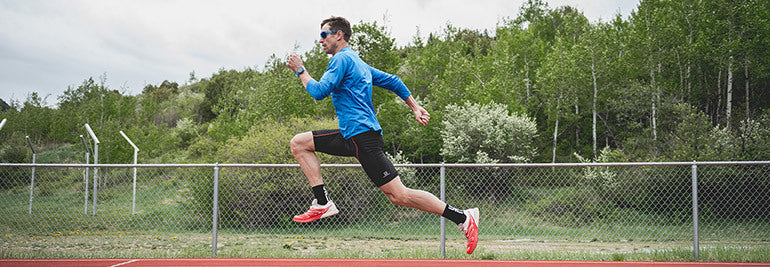
8 Essential running form drills
Improve your running technique with these essential running form drills – and follow them as a SuuntoPlus Guide on your watch!
UPDATED ON MARCH 29, 2022
In the previous weeks we have talked about running economy and given some key areas to focus on in your running technique . But how to actually change something or to improve? Here are XTERRA World Champion and professional coach Josiah Middaugh’s essential running drills for distance runners – with videos!
Follow these running form drills on your Suunto!
With the help of SuuntoPlus Guides, you can now follow these running form drills on your Suunto watch. Before starting a running exercise on your watch, go down to exercise options and select ’Running Form Drills’ from the SuuntoPlus Guides menu. Start the workout and you will see step-by-step guidance on one of your watch screens. Swipe left until you see it. Press lap (lower right button) to advance from one step to the next one.
Read on to learn the drills!
Skip with high knees (“A” skips)
Drive your knee up forcefully lifting you off the ground. Keep movements primarily in the sagittal plane. Keep your foot dorsiflexed, which means your toes drawn up towards your shin. This is a small skip since you land on the same foot and then switch. (Scroll down for a video of all the drills.)
Run with high knees
Similar to the “A” skips, but instead of skipping there is a quick transition from one foot to the other, just like running. Focus on breaking the vertical plane with your thigh each time.
“B” skips
This is just like the “A” skip, except after you drive the knee up, then extend the knee. Knee extension happens passively as you snap the leg back down with your glutes and hamstrings, pawing your foot to the ground.
Butt kicks (heel to butt)
Traditional butt kicks are usually performed incorrectly, swinging the heel in a half circle towards the butt. Instead, draw the keep up in a straight line towards the bottom of the butt or top of the hamstrings. To do this, allow the knee to come forward, but not quite as high as the high knees drill.
Power skips
This has all of the same points as the “A” skips except you are going for more height. Momentum is created by driving the knee up and also forcefully pushing off the ground.
Carioca drill
Most running is performed in the sagittal plane, but stabilizing also occurs in the frontal plane. The carioca drill is a side ways motion requiring adduction/abduction and coordination. Face sideways and cross your trailing leg in front and then behind and you continue in the sideways direction. Continue facing the same direction for your return trip.
Bounding
Bounding is a higher intensity running drill designed to improve power and efficiency. Essentially bounding is just an exaggerated run with lots of vertical and horizontal displacement. Go for both height and distance with each stride. To keep from skipping, try jogging 5-10 yards before starting the drill. These can be performed on flat ground or uphill.
Strides
Strides are just controlled sprints. Gradually increase speed for 30-40 meters and then maintain high speed with good, controlled form for another 40-60 meters. The key is not to strain or sprint all out. Make it look easy. I like 70-100 meters for these on a relatively soft surface such as a rubberized track or turf.
Watch all the running form drills on video!
Watch coach Josiah's essential running form drills here.
Josiah Middaugh is a XTERRA Pan America Champion and 2015 XTERRA World Champion. He has a master’s degree in kinesiology and has been a certified personal trainer for over 15 years (NSCA-CSCS).
Images and video by Matt Trappe

Kilian’s Everest climb from Base Camp to the summit
We caught up with Kilian as soon as he returned to Europe and talked a bit about his two Everest summits.
“It was really interesting to see the Himalayas and Everest as the mountains in the Alps. In the Base Camp I packed all the gear I needed, a backpack of about seven kilos, and started running towards the night and then kept moving all the night and during the day on the ridge. When I was on the summit it was night again. It was a really good feeling to be on the summit of the world alone,” Kilian says.
Watch a Suunto Movie of Kilian’s amazingly fast ascent from Base Camp to the summit
Kilian started the climb at the Base Camp at the ancient Rongbuk monastery at 5.100m. The climb began well but Kilian was hampered by stomach problems from 7.500m, which slowed him down considerably and forced him to make repeated stops.
“I didn’t feel great and was moving very slowly. I had to stop every few metres with cramps and vomiting. But I felt ok with the altitude and decided to continue. When I got back down [to Advanced Base Camp] I thought I would like to try another attempt if I felt well enough,” he explained.
And Kilian did. Only six days later he summited Everest from the Advanced Base Camp (6.400m). The weather was worse than during his first climb, very windy and snowing at the top. However, the conditions improved throughout the night and he returned to the camp 28 hours 30 minutes after leaving.
“I was feeling a little tired from the first climb but it was good to know that it is possible to climb these big mountains on consecutive days, not only as one month projects with one summit per month. It is possible to do many activities in the big mountains. It was really windy and it was snowing on the summit but it was another incredible moment,” Kilian says.
The two ascents are part of Kilian’s Summits of My Life project, which has taken him to some of the most iconic mountains across the globe setting records for fastest known ascents. He began in the Mont Blanc range in 2012 and has since climbed in Europe (Mont Blanc & Matterhorn), in North America (Denali) and in South America (Aconcagua). He tried to ascend Everest already in 2016 but then poor weather conditions forced him to abandon his climb.
Kilian was accompanied on this Everest expedition by mountain guide and cameraman Sébastien Montaz-Rosset.
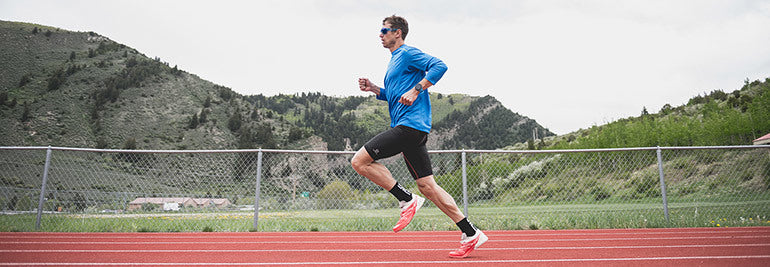
Intro to distance running technique
Stride rate
Despite the running speed, stride rate should stay within a narrow range. At race pace, cadence should be at or above 180 steps per minute, or 90 revolutions per minute (counting one leg). Suunto uses revolutions per minute, so a good goal at race pace is 90-92 revolutions per minute. During training, endurance pace for example is considerably slower, however cadence should still be close to that 90 rpm mark. I shoot for 86-90 rpms no matter how slow I am running. This means a shorter, quicker stride for endurance and recovery paces.
Foot strike
As your foot swings through and the leg extends out in front, most people set the foot down too early, creating a breaking force, heel strike, and high impact. Instead, paw back and contact the ground under your center of gravity with a softer landing propelling you in the direction of travel.
Vertical oscillation
A long, loping stride has a larger vertical component, which results in more distance traveled up and down. Think of your legs as wheels rather than pogo sticks. One way to see this is to have someone video you running along a fence and see the vertical displacement.
Running tall
This is a good mantra for any runner to keep in mind. This means maintaining a strong core, posture, and head position. Look forward towards the horizon. Imagine you are a marionette doll with a string holding you up from the top/back of your head. Uphill, think about staying vertical. For gradual downhills, lean forward so you are perpendicular to the slope.
Slight forward lean
Running tall, but with a slight forward lean. Running is a series of falls, so you want a slight forward lean which is more pronounced at fast running speeds. Do not achieve this from bending forward at the waist. You should have a straight line from your ground contact point, up through the top of your head. One drill I like is a sprinting drill called “falling starts.” Start by standing tall and then fall forward with the fulcrum point at the balls of your feet, staying long with no breaking at the waist. You will want to step forward to catch yourself, but instead of a step, immediately break out into a fast run.
Arm carriage
Your arms are your counter weights so movement is good, but it should happen naturally and without expending extra energy. Straight on, hands can swing towards the center line, but should not cross. Elbow should be bent with a slightly acute angle, less than 90 degrees to keep the lever arm short. Be careful not to carry your arms too high or elbows to wide, which results in excess strain on your shoulders, upper traps, and neck. Keep hands relaxes as if you are carrying a fragile egg in each hand.
Josiah Middaugh is the reigning XTERRA Pan America Champion and 2015 XTERRA World Champion. He has a master’s degree in kinesiology and has been a certified personal trainer for 15 years (NSCA-CSCS).
Images by Matt Trappe
Kilian Jornet summits Everest twice in a week
“I’m so happy to have made the summit again! Today I felt good although it was really windy so it was hard to move fast. I think summiting Everest twice in one week without oxygen opens up a new realm of possibilities in alpinism and I’m really happy to have done it,” Kilian said after returning to the mountain’s Advanced Base Camp. Jornet had already reached the summit on May 22, but stomach cramps had prevented him from completing his route as planned.
Jornet reached the summit via the North Face of Everest on May 27 at 9pm. He had left the Advanced Base Camp at 6.400m at 2am. He climbed to the summit on the ‘normal’ route passing the three high altitude camps used by climbers attempting the world’s highest mountain, a climb which takes on average four days.
The climb to the summit was slow but continuous. The wind was the main obstacle Jornet had to overcome, on an extremely windy Himalayan day. Weather conditions improved throughout the night in the latter part of the route and he returned to Advanced Base Camp 28 hours 30 minutes after leaving.
With this ascent Jornet repeats the feat of reaching the world’s highest point after having climbed to the summit only six days earlier. On the previous climb, he reached the summit in 26 hours, but he started that one lower down, at the Base Camp at the ancient Rongbuk monastery at 5.100m. The first climb had begun well but he was hampered by stomach problems from 7.500m, which slowed him down considerably and forced him to make repeated stops.
“I didn’t feel great and was moving very slowly. I had to stop every few metres with cramps and vomiting. But I felt ok with the altitude and decided to continue. When I got back down I thought I would like to try another attempt if I felt well enough,” he explained.
The two ascents are part of Kilian’s Summits of My Life project, which has taken Kilian to some of the most iconic mountains across the globe setting records for fastest known ascents. He began in the Mont Blanc range in 2012 and has since climbed in Europe (Mont Blanc & Matterhorn), in North America (Denali) and in South America (Aconcagua). He tried to ascend Everest already in 2016 but then poor weather conditions forced him to abandon his climb.
Jornet was accompanied on this Everest expedition by mountain guide and cameraman Sébastien Montaz-Rosset.










































































